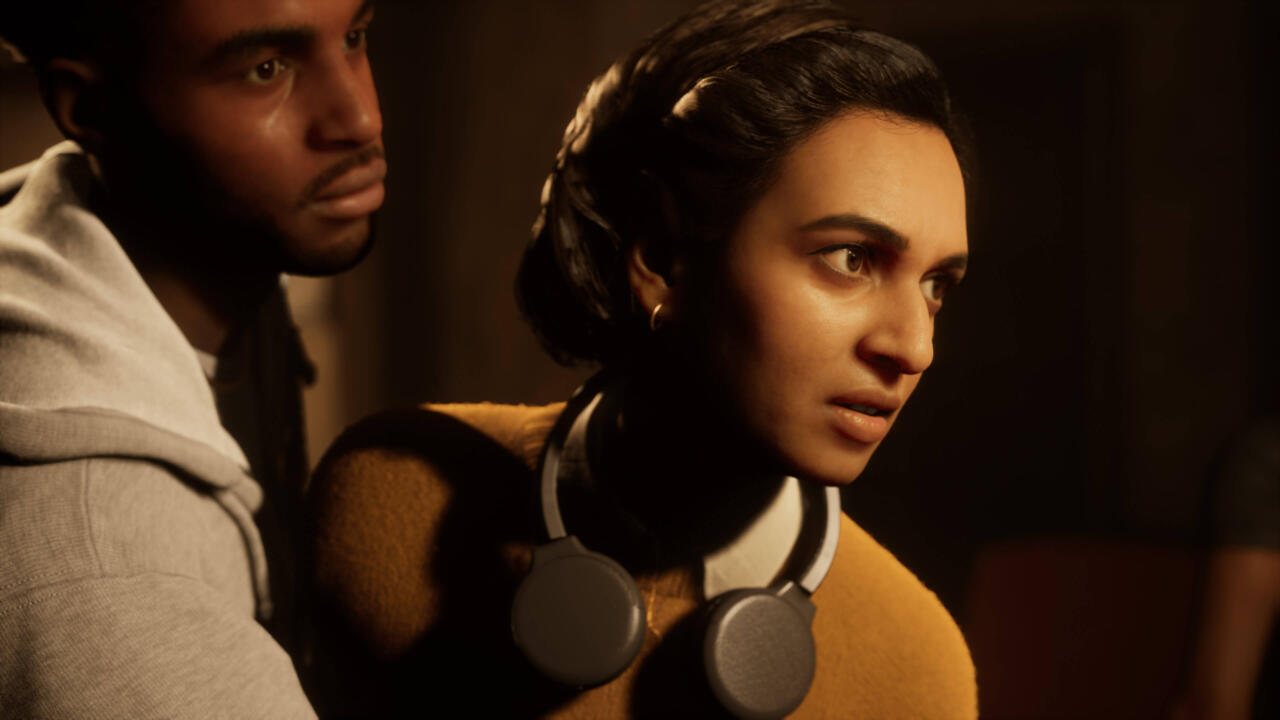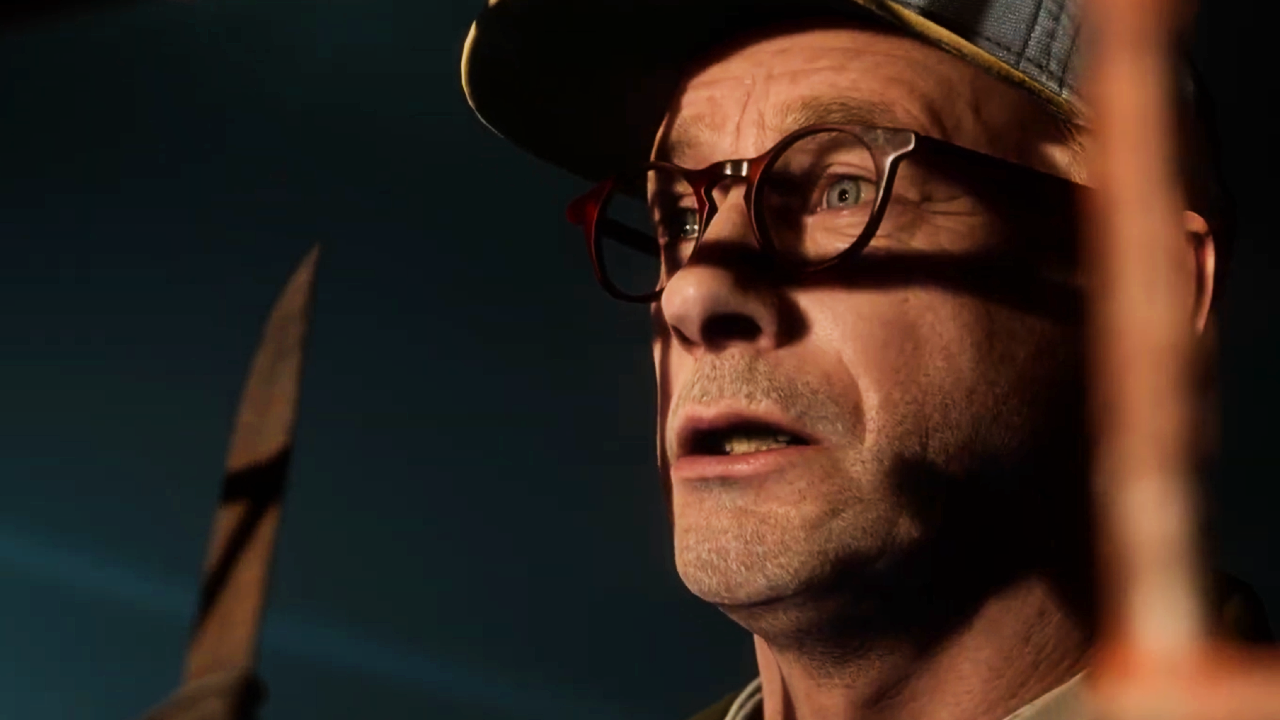When The Dark Pictures Anthology was revealed, its promise was immediately obvious: Take the team that gave us the excellent Until Dawn and have it tackle new horror subgenres at a clip of about once per year. Results have been mixed across the four released games, but on a steady upward trajectory that does not falter with the latest effort. The Devil in Me is Supermassive’s latest slasher, and it outshines its predecessors–with a more cohesive plot, best-in-series characters, and a bit of clever gamification injected into the cinematic experience.
The Devil in Me takes us to Chicago, first at the turn of the 1900s to introduce–or, for horror fanatics, more likely remind us of–H.H. Holmes, sometimes dubbed “America’s first serial killer.” Holmes’ “murder castle” was in fact a hotel that he had outfitted to operate as more of a maze of horrific contraptions that could make Jigsaw’s works look like Mouse Trap. After a short flashback, the game jumps to the present day and follows an indie film crew making a documentary about Holmes.
To their excitement, they’re invited to a scale replica of the killer’s ghastly hotel that doubles as something of a museum where they’re promised footage and exclusive background information. As it turns out, the curator of the grounds is less than well-hinged himself–who could’ve guessed?–and what unfolds from there is roughly five or so hours of quality slasher material.
Each game in the series has put a familiar face in its small cast, and for The Devil in Me, it’s Jessie Buckley, fresh off the polarizing Alex Garland body-horror film, Men. While that could be called “elevated horror” by those who like the term, The Devil in Me is–like all of The Dark Pictures–a more traditional blood harvest, and it works because Supermassive understands that.
The Devil in Me solves for many issues its predecessors struggled with to varying degrees. Its characters are likeable, which hasn’t always been the case, and more important than that, they’re given time to breathe early on in the story. By the time their lives are threatened, I found myself caring for them for reasons that went beyond just wanting to pass the game’s many quick-time events. The game’s demanding decision points carry more weight as a result. It’s one thing to unlock a Trophy for keeping everyone alive. It’s more interesting and rewarding to persevere because you genuinely wish them well.
The Devil in Me also expects you to keep in mind what you’ve learned about each character in ways that bring you closer to them. One character’s asthma is used to great effect several times and in different ways, always demanding that I reminded myself of her ailment and understood how that might uniquely change any given life-or-death situation for her. There are some really clever kill scenes in this game, and Supermassive continues to make them feel fair. A good horror story probably doesn’t see everyone surviving, so when I did lose characters, I was glad to feel as though they were my mistakes, not the result of murky win scenarios.
Another improvement comes in how The Devil in Me unexpectedly takes a step back from the series’ normally stringent movie-like qualities. It’s still a highly cinematic game where the bulk of the gameplay comes in making choices with little time to think things through and succeeding at blink-and-you’ll-miss-it QTEs where failure often means death.
However, there are a few puzzles mixed into this one that give it more traditional gameplay, and there’s variety in how you solve problems, like scavenging for items that might save lives at some point in the unknown future. Each character even has one or more unique items, like the audio technician being able to use a portable boom mic and headphones to hear things better, or the camera guy who can photograph crime scenes to–ideally–turn into the cops when he survives.

The series took a half-step away from its movie-like origins with last year’s House of Ashes when it moved to a typical over-the-shoulder camera, so this year’s installment in the creepy series feels like the other half of that step, embracing more video game-like qualities without losing its filmic intentions. However, it’s starting to show its age. Given the visual feat that is The Quarry, Supermassive’s 2K-published horror game from earlier this year, The Devil in Me is certainly less stunning to look at, so it’s hard to go back to The Dark Pictures’ less-detailed world. That’s not to say it looks bad, but playing on PS5, only the option of a higher framerate gave me the impression that the game is current-gen. For its second season, The Dark Pictures would benefit from a technical upgrade.
This is true not just in how it looks, but how it plays. Simple actions like opening a drawer using a lockpicking minigame newly seen in this latest sequel are almost comically slow in how they break down actions into a series of smaller movements. Opening a drawer, for example, involves grabbing the drawer’s handle, then pulling on it to find that it’s locked, then slowly equipping the unlocking device, using it, then returning to a free hand, then pulling on the drawer again. It makes me feel like a laundry-folding robot carrying out blatantly segmented directions.
Sometimes hesitating is necessary, like when your best method to survive is actually inaction, but these sluggish interactions are all too common. Supermassive wants to make its characters feel weighty, and I think that’s the right call because with it comes vulnerability, but there’s a middle ground that can salvage that necessary vulnerability while still making the game feel better to control overall.
While this sequel doesn’t fix those long-standing issues, it does tell a better overall story than those that came before it. I’ve enjoyed each of these games so far, but the Devil in Me certainly has the best lore of the series. As usual, you can miss a lot of that if you don’t tread down peripheral pathways before mainlining it to the next killing stage, but players who do find themselves picking up every frantic note, police report, or cryptic recorder they can find will come away with an added layer to the story that elevates it beyond a simple slasher. As a big horror fan, I love that.

With so many branching pathways, I’ve found that some games like this, even within this series, can feel disjointed by the end, like the game’s modular parts aren’t always sufficiently versatile, and your ending can feel like it comes out of nowhere as a result. While I haven’t gone down every path, I was happy to find that this wasn’t at all the case in my time with the game. A few lingering threads I left behind feel more like lore I overlooked, whereas in past games, it was entire character arcs or motivations that often had me scratching my head.
The Devil in Me is the best game in the series. Supermassive delivered a great script this time out, and while it’s more straightforward than some others that tend to lean on a mid-game twist, it’s not without surprises. I strongly feel the second season of The Dark Pictures both needs and deserves a technical overhaul, and I think if that can align with another story as fun as this one, The Dark Pictures will have finally achieved its full potential. For now, it’s still climbing toward that peak, but it’s going in the right direction.

